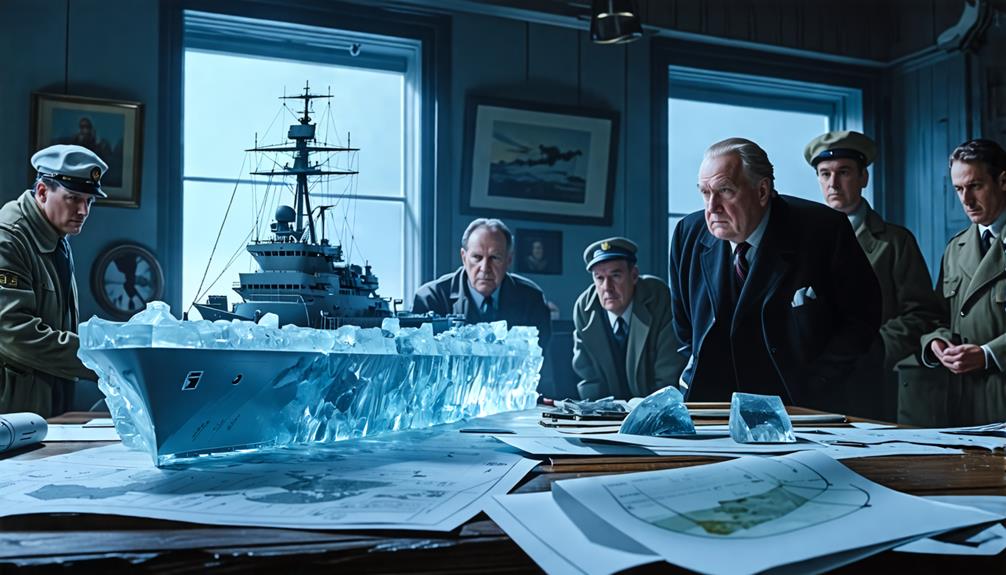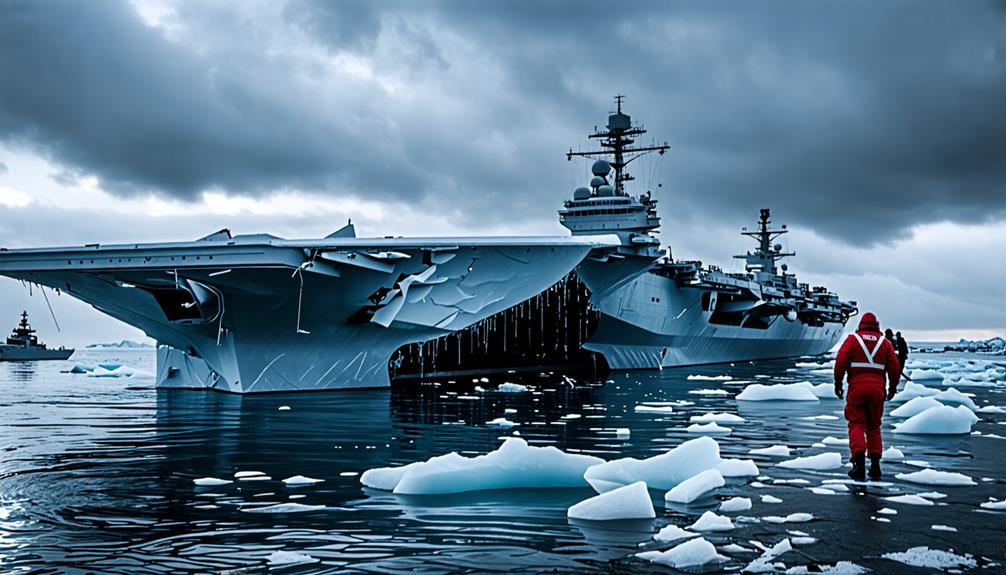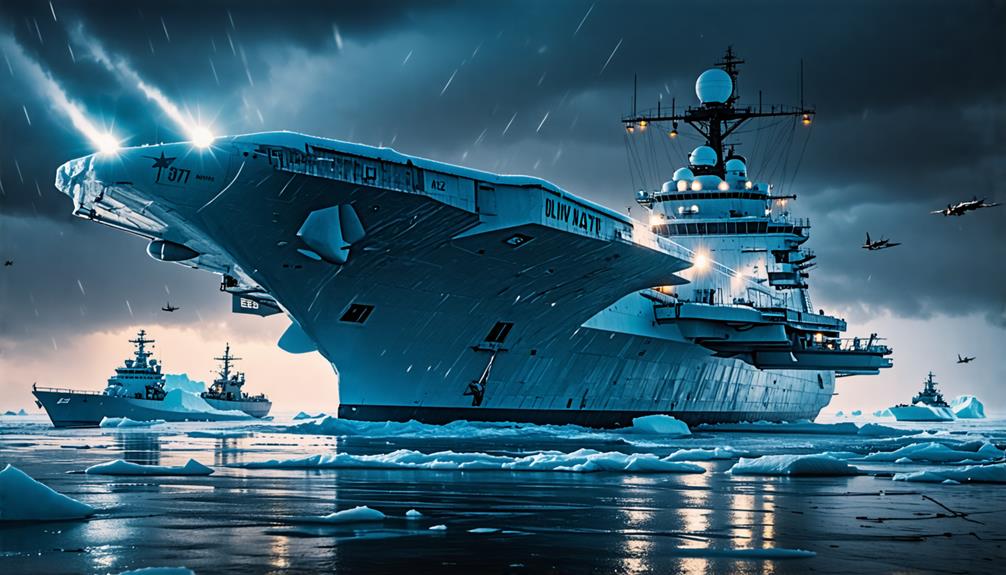You've probably heard of some outlandish military ideas from World War II, but have you ever imagined an aircraft carrier made of ice? It's not a far-fetched plot from a sci-fi novel; it was a real British plan called Project Habakkuk. The concept aimed to create massive, unsinkable ships using a frozen mixture of ice and wood pulp. While it might sound absurd, the project had serious backing from high-ranking officials and scientists. But why would anyone consider such an unusual approach to naval warfare? The answer lies in the desperate times and innovative thinking that characterized the war effort.
Key Takeaways
- Project Habakkuk proposed an ice-based aircraft carrier to counter German U-boats during WWII.
- The vessel, HMS Habbakuk, was designed to be 2,000 feet long and carry 300 aircraft.
- Pykrete, a mixture of 15% wood pulp and 85% water, was the primary material for construction.
- The project faced significant engineering challenges, including complex refrigeration systems and resource allocation issues.
The Genesis of Project Habakkuk

During World War II, Geoffrey Pyke proposed Project Habakkuk as an innovative solution to counter the German U-boat threat in the Atlantic. The idea caught the attention of Lord Louis Mountbatten, head of Combined Operations, who supported the unconventional concept. Pyke envisioned an ice-based aircraft carrier named HMS Habbakuk, designed to protect Allied shipping routes.
The proposed vessel would be an engineering marvel, stretching 2,000 feet long and capable of carrying 300 aircraft. Its structure would primarily consist of pykrete, a material made from 15% wood pulp and 85% water.
To evaluate the project's feasibility, the National Research Council of Canada led initial testing and development efforts. They constructed a prototype at Patricia Lake to assess the viability of this ambitious ice carrier concept.
Despite early enthusiasm, the project faced numerous engineering challenges.
Pykrete: Nature's Naval Innovation
At the heart of Project Habakkuk's ambitious vision lay an innovative material that would revolutionize naval engineering: pykrete. This unique composite, consisting of 15% wood pulp and 85% water, was developed for military applications during the Second World War. Pykrete's exceptional tensile strength and insulation properties made it an ideal candidate for constructing massive ice aircraft carriers like HMS Habbakuk.
You'd be amazed by pykrete's resilience. It could absorb impacts without shattering, outperforming both traditional ice and concrete. Winston Churchill himself witnessed demonstrations of this naval innovation in his bathtub. The material's potential for building unsinkable, cost-effective vessels capable of carrying 300 aircraft was undeniable.
Despite its promising attributes, pykrete-based designs for wartime naval vessels were ultimately abandoned due to procurement challenges and engineering complexities. Nevertheless, this ingenious blend of nature and technology remains a fascinating chapter in military history.
Challenges and Ultimate Fate

Despite its promising concept, Project Habakkuk often encountered formidable challenges that ultimately led to its abandonment.
HMS Habbakuk's construction faced significant engineering challenges, including the need for a complex refrigeration system to maintain the pykrete structure. The project required an estimated 300,000 tons of wood pulp, raising concerns about resource allocation during World War II.
Testing at Lake Patricia revealed issues with the pykrete's strength and damage to the prototype's cooling pipes. By October 1943, advancements in radar and long-range aircraft had diminished U-boat threats, making the ice aircraft carrier concept less relevant. The project was abandoned, and the prototype sank in Lake Patricia.
Today, you'll find only a commemorative plaque installed in 1988 to honor this unusual wartime endeavor, as the remains of the prototype have deteriorated over time.
Conclusion
You've learned about one of the most unusual ideas from World War II.
Project Habakkuk's ice aircraft carriers never sailed, but they've left a lasting impact on military ingenuity.
While impractical, the concept pushed the boundaries of what was thought possible.
Next time you're sipping a cold drink, remember: that ice could've been part of a warship!
It's a chilling reminder of how desperate times can spark incredible innovation.

Leave a Reply